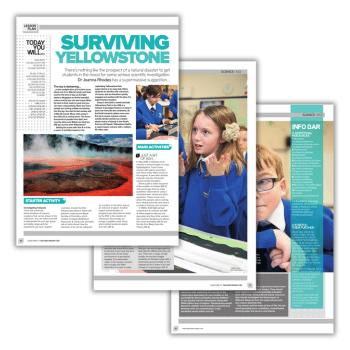In this KS3 volcanoes lesson, pupils will learn about volcanic activity and the nature of volcanic eruptions. They will be able to explain what happens during a volcanic eruption. They’ll also find out why ash, in particular, can cause problems for the global economy.
They will also be able to explain the human impact of a supervolcano. Students will also consider the various ways in which we can manage disasters.
Setting the scene with Year 8 or 9 for a series of activities based on the captivating Yellowstone Park supervolcano is an easy task.
Many students are familiar with volcanoes, of course. This means it’s simple to engage and excite them with the idea of a supermassive eruption.
KS3 volcanoes starter activity
There are numerous demonstrations of volcanic eruptions that you can show in the classroom. Select one that is appropriate for your age group and ability range and the equipment you have.
Superb examples include the Wax Volcano described in detail with teachers’ notes by the Royal Society of Chemistry, which models a hotspot.
Using cola and table salt or mints shows how the extrusion of air can be catalysed by a surface in the same way as an extrusive eruption.
Another superb demonstration of eruptions also described in detail by the RSC is the reaction of ammonium dichromate, an orange crystalline solid, which when ignited produces sparks and ‘ash’ (AR 2).
Dr Joanna L. Rhodes M.Chem, D.Phil, MRSC is a teacher of science at Shelley College, Huddersfield.














